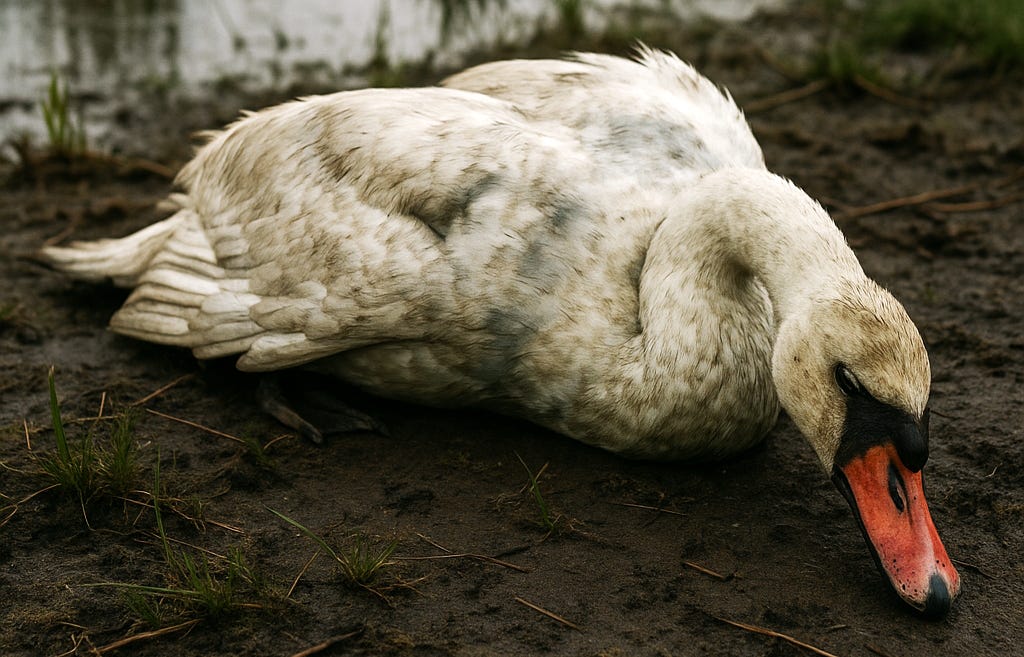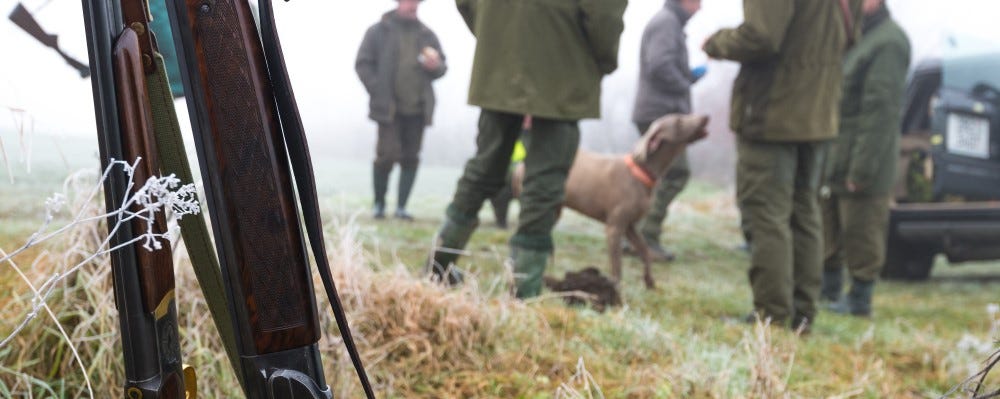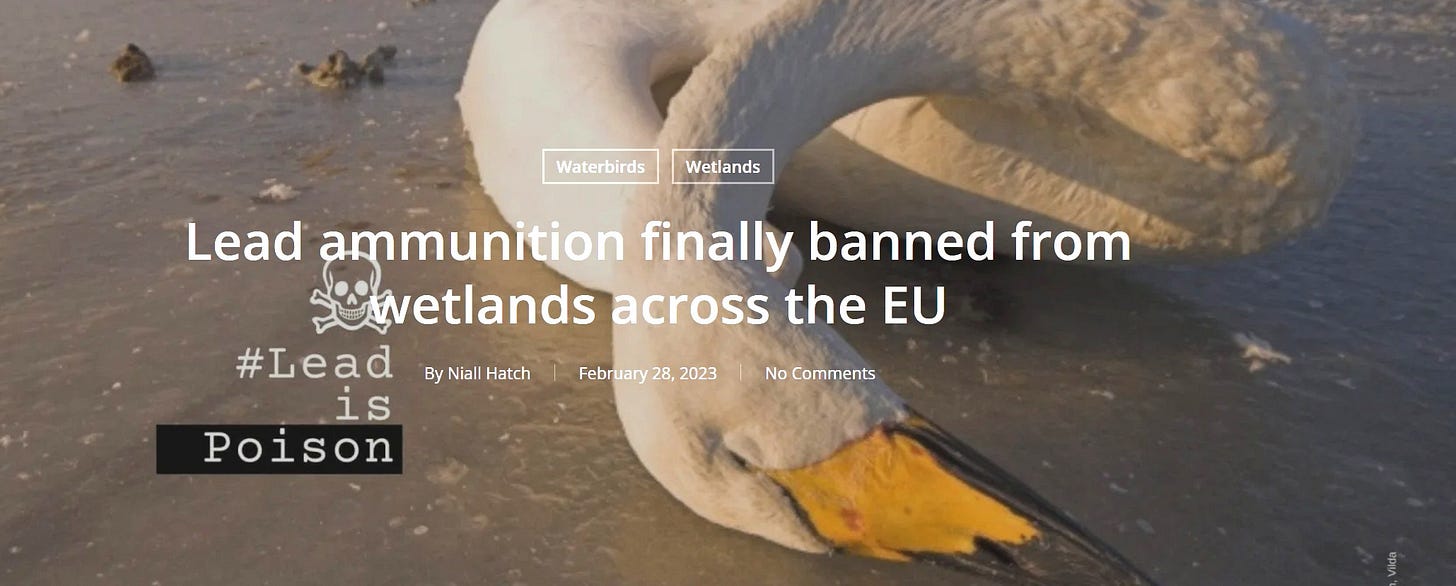Emma Hardy, Parliamentary Under-Secretary at Defra (Department for Environment, Food and Rural Affairs) has announced “significant new restrictions on lead ammunition”, aiming to “safeguard British wildlife and waterways” from its harmful effects (a disingenuous statement we discuss below). The measures will prohibit shots with over 1% lead and bullets exceeding 3% lead content, and ammunition failing to meet these new thresholds will no longer be available for public sale.
It claims the new restrictions could help prevent the release of 7,000 tonnes of lead into fields, forests and wetlands each year. The Government said it aims to legislate the restrictions (ie pass them into law) by summer 2026, followed by a three-year transition period to give the shooting and hunting sectors “the time to transition to more environmentally friendly alternatives” – taking us up to the next General Election (hopefully coincidentally, but who knows?) and meaning of course four more years of lead shot being blasted into the countryside.
As with all things ‘shooting’, specific exemptions apply. These cover military and police use, elite athletes, museum collections, and outdoor target shooting ranges operating with appropriate risk management protocols.

Why does banning lead matter?
The new ban has come after literally decades of stalling and prevarication by the shooting industry (on behalf of its shooting members), which decided long ago that replacing lead shot was a ‘line in the sand’ it wasn’t going to willingly cross.
Lead is a dangerous pollutant, however. There is no known safe level of exposure. We’ve known that for centuries. A Greek physician writing in the 2nd century BC provided the first detailed descriptions of the symptoms of lead poisoning. The Romans used lead in their plumbing (the word comes from the Latin word for lead, plumbum), but were very aware it could cause serious health problems. That lead is an invisible and slow-acting poison was well-known by the Lucrezia Borgias and Catherine de Medicis of Renaissance Europe. The medical profession knows that even blood lead concentrations as low as 5 µg/dL may be associated with decreased intelligence in children, behavioural difficulties and learning problems. Lead is even known to affect the neurological development of unborn babies.
Here in the UK, lead was banned from water pipes decades ago, from paint in 1992, and finally fully banned from vehicle fuel in 2000. But while it became illegal in 1999 in England and Wales to use lead shot over wetlands, shooters are still allowed to use lead shot in cartridges for use everywhere else.
Each cartridge fired ejects about 300 pellets of lead. Shooting industry figures suggest that as many as 260 MILLION cartridges “are needed across all UK sporting activities” (as well as being full of lead, cartridges are a significant source of dumped plastic). This means that every year (as the government stated) around 7 thousand tonnes of lead is fired across fields, moorlands, and woodlands, where it contaminates soil and water. Try openly dumping any toxic waste in the countryside as a member of the public (rather than as a part of a shoot) and see what fines you can be hit with under the Environmental Protection Act 1990…
As well as leaching into the soil, spent lead risks the health of wild birds that mistakenly ingest lead shot with prey or (in the case of waterfowl like some ducks and swans) swallow it instead of small stones to grind down food in their gizzards. The Government says that up to 100,000 ducks, swans, and shorebirds die from lead poisoning annually. Lead-poisoned birds die slow, agonising deaths, as frequent firsthand reports from the likes of Wildfowl and Wetland Trust (WWT) attest.
Evidence from the Health and Safety Executive shows lead poses a risk to at least one million birds over the coming decades if usage continues at its current rate. It also found that around 40,000 birds of prey, such as Red Kites and White-tailed Eagles, are at risk from ingesting lead through carrion.
And all this pollution and pain, remember, is produced so that a few people can go out and kill the wildlife that Emma Hardy says the government wants to ‘safeguard’.

Dragged to the lead-free table.
It is clear that there is no valid reason to continue releasing lead into the environment, but the shooting industry – which has the gall to claim In the past that its use of lead shot is an animal ‘welfare issue’ because it is denser than alternatives, meaning (providing the shooter is actually proficient) a ’cleaner’ kill – has been resisting this moment for many years.
Not just here in the UK but across Europe too.
In 2004 the self-aggrandising European Federation for Hunting and Conservation (FACE) made an agreement with BirdLife International which included a commitment to phase out lead shot use in wetlands “as soon as possible” throughout the EU, and in any case “no later than 2009”. Eleven years past this deadline, FACE brazenly stated that the transition period proposed by the Commission to phase out lead shots was ‘too-short’.
Here in the UK a ban has also been sidelined in favour of ‘voluntary’ arrangements and ‘transition periods’. A typical example is from 2020, when nine of the UK’s shooting organisations (including BASC) announced they were introducing a ‘five year voluntary transition away from toxic lead shot’. This move was clearly meant as a way to stop the introduction of legislation which would force a ban.
Not long afterwards, in January 2023, Shooting UK gloated that the “process to restrict lead shot” across the UK had been pushed back yet another six months to February 2024, this time blaming a “post-pandemic global supply challenge”.
The progress towards a full ban was inevitable, though (a fact the industry should have seen coming, implementing a ban for an easy PR ‘win’ a long time ago). On 15th February 2023 using lead shot ammunition in wetlands became illegal in all 27 EU countries, as well as in Iceland, Norway, and Lichtenstein. The law came into force following a 2-year transition period given to EU countries to prepare for the change.
By 2023 the UK had of course left the EU, but the evidence was continuing to build up. A report published by the Wildfowl and Wetlands Trust in September 2024 showed that the law on lead shot use over wetlands was still being widely broken. Of 176 Mallards (the duck species most widely killed by shooters) collected from 37 suppliers across England in 2021-22, of the 133 that contained recent shot, 69% had been shot illegally with lead.
Dr Julia Newth, WWT co-author of the report, summed up the immense frustration conservationists were feeling with the lawbreaking:
“It’s a scandal that this illegal shooting has been going on for years.
“Lead has been poisoning our wildlife and communities for decades. Voluntary efforts to phase out lead ammunition have failed: it took policy to remove lead from petrol, paint and pipes, and it will take policy to remove it from ammunition.
And how was the voluntary phase-out going? A damning report from the University of Cambridge published in March 2025 was headlined “Pledge to phase out toxic lead ammunition in UK hunting by 2025 has failed”.
The report stated that
“The team has closely monitored the impact of the pledge every year since its introduction, recruiting expert volunteers to buy whole pheasants from butchers, game dealers and supermarkets across Britain and recover embedded shotgun pellets for analysis.
In 2025, the study – called SHOT-SWITCH – found that of 171 pheasants found to contain shot, 99% had been killed with lead ammunition.”

A mandatory ban
The Health & Safety Executive (HSE) assessed the risks to the environment and human health posed by lead in shot and bullets. Its ‘Statement on HSE proposals to restrict use of lead ammunition in Great Britain’, published in December 2024, is the source of many of the statistics used by Emma Hardy in the Defra press-release.
It concluded that “
“Currently, the risks of lead shot to the wider environment are not adequately controlled. While there are already legally binding measures in place to protect Britain’s wildlife in designated wetlands from the use of lead shot, our analysis has demonstrated the need for further restrictions.”
The statement proposed that the UK Government ban the use of lead shot and large calibre bullets for animal shooting because of the risks they pose to the environment and health. A response to the recommendation was due in March 2025, but it is now finally here.
We wrote three years ago that “Our feeling is that shooting itself is overseeing the implementation of the stricter controls it has always fought against, and will have only itself to blame when they are put in place.” We were right and, of course, we welcome the ban and congratulate the scientists and researchers that have spent decades working for it (in particular Professor Debbie Pain, who was WWT’s Director of Conservation from 2008 to 2017 and who has worked on this issue since her PhD research on lead shot in the 1980s).
Wildlife ‘safeguarded’ but still being killed?
There is no suggestion that we can find which would force lead shot manufacturers to clean up the immense levels of pollution they’ve already caused (the ‘polluter pays’ principle is rarely enforced), but it will (assuming shooters will finally realise that the days of lead shot are nearly over) eventually stop the release of more lead into the environment.
It’s worth noting, though, that the HSE statement included a paragraph that we think tempers the relief that comes with the ban on lead shot.
“People will still be able to continue to shoot, but we are proposing that for some outdoor uses in the future, alternatives to lead ammunition would need to be used.”
As the statement goes on to explain, steel (or bismuth) shotgun pellets have long been a practical alternative to lead and could be used in the vast majority of shotguns, as can other safe lead-free alternatives. In other words, there are no additional restrictions whatsoever on the species or on the number of individual animals that this vile industry can kill.
The consideration of a ban on shooting per se was never part of the remit, but it is disappointing to read Emma Hardy claim that the ban will “safeguard British wildlife”. Yes, some wildlife will be ‘safeguarded’, but only incidentally – protected from the dumping of lead into the environment, but not from the alternatives that shooters will switch to and use to continue the killing. In fact, while shooting lobbyists BASC (who were part of the group that put forward a voluntary five-year phase out in 2020, remember) have typically bleated that a further three-year transition is too short, other lobbyists have spun the ban to favour the shooting industry. GWCT, for example, says lead “has been a barrier to more people enjoying game meat. Greater availability of non-lead shot game will offer a healthier alternative which everybody can enjoy.” In their opinion, then, a ban on lead will be an ‘open the floodgates’ opportunity to get more dead pheasants into the shops.
This “safeguard British wildlife” phrase appears to us to be another example of the normalisation of the shooting of animals in the UK. We understand that Ministers are not necessarily wildlife experts (or even particularly interested in wildlife), and are under pressure to release statements in short order, but those three words do seem (to us anyway) to demonstrate the chasm that the shooting industry has successfully driven between the ‘animals we shoot’ and the rest of the nation’s wildlife.
This ‘separation’ of species from each other is widespread. Quoted in The Independent, James Robinson, RSPB’s chief operating officer, said this move “will mean that Britain will become a safer place for millions of birds and other wildlife.” This echoes something we noted last week when the RSPB seemed to have fallen into the same lie when they wrote in their response to the Ban Grouse Shooting parliamentary debate, “The RSPB is neutral on the ethics of shooting, and concerned only with preventing the harm caused to wildlife through the management of some grouse shoots” (see our post Are Red Grouse ‘wildlife’?).
It is undeniably important to stop the incidental poisoning of thousands of birds, and thanks to the intransigence of a far too influential industry it is also unforgivably overdue. But let’s not pretend this ban somehow means an across-the-board protection for wildlife. The fact is that wildlife will still suffer, because no matter what metal is used, blasting red-hot pieces of it into the body of an animal causes suffering, pain, and death.
Yes, using lead shot had to be stopped, but if we really want to protect wildlife it is the industry and its complicit clients that need to be banned.

